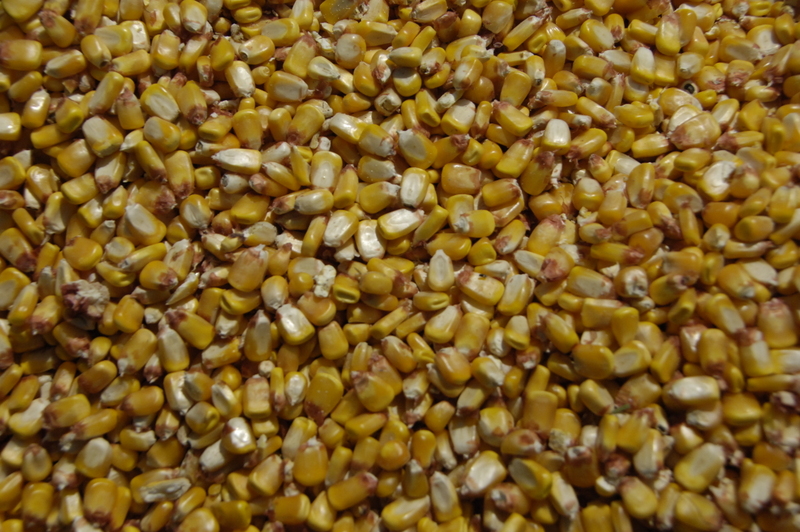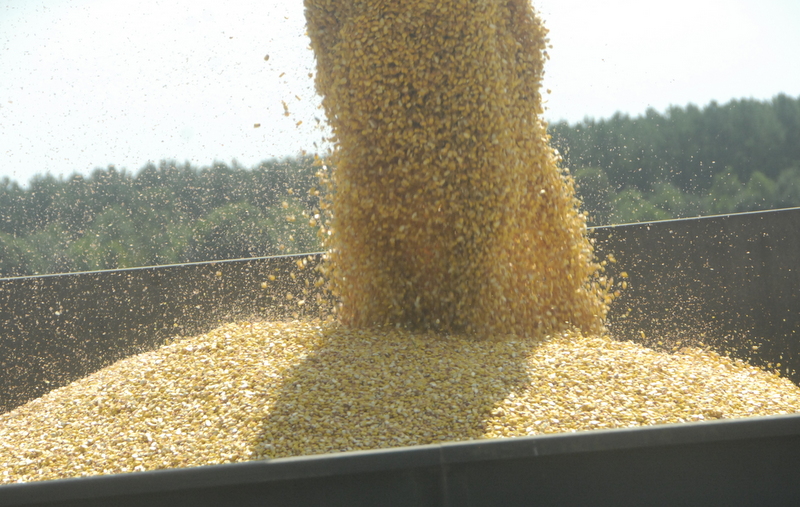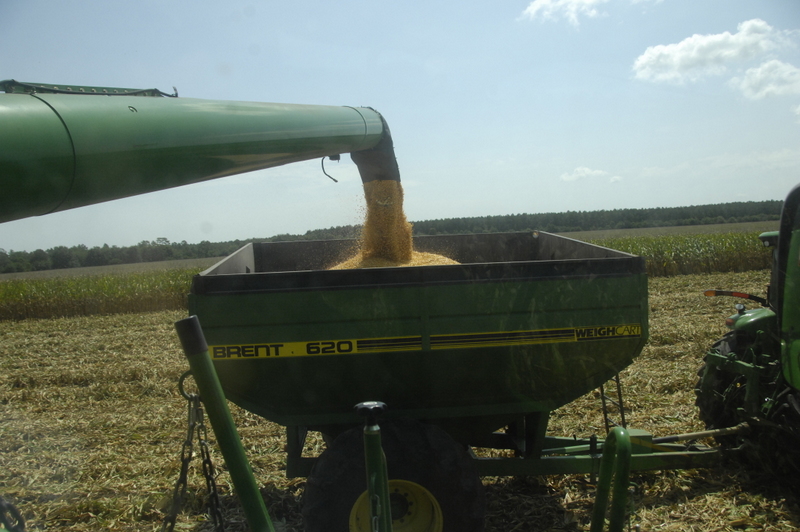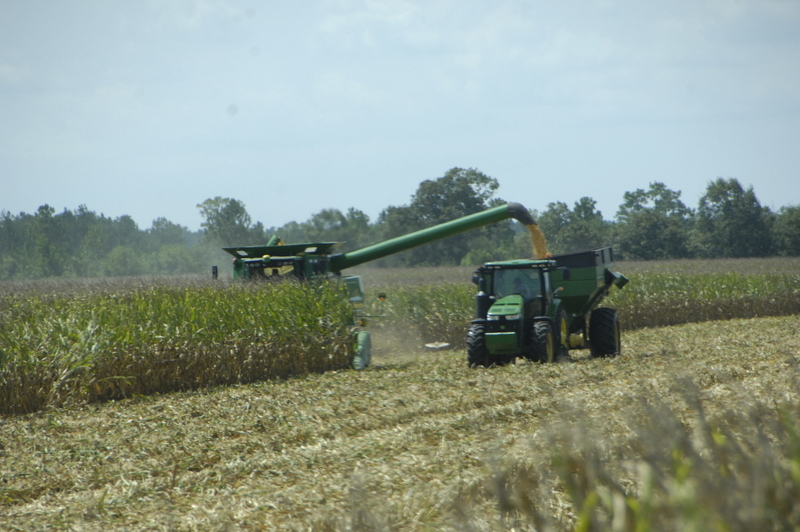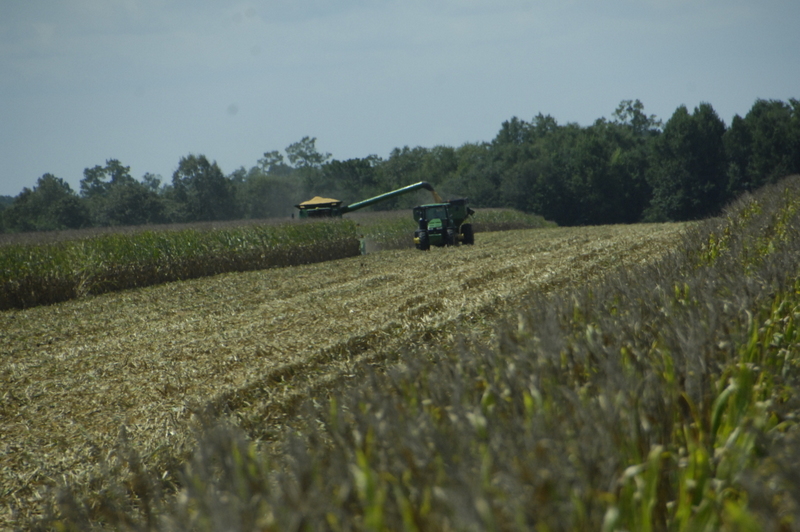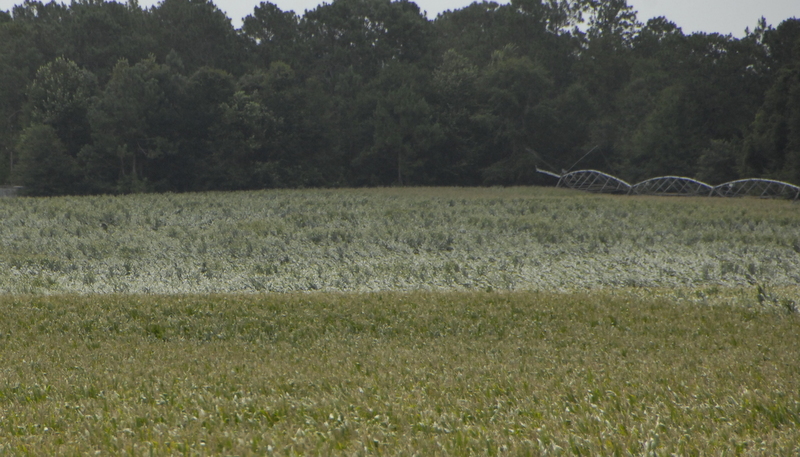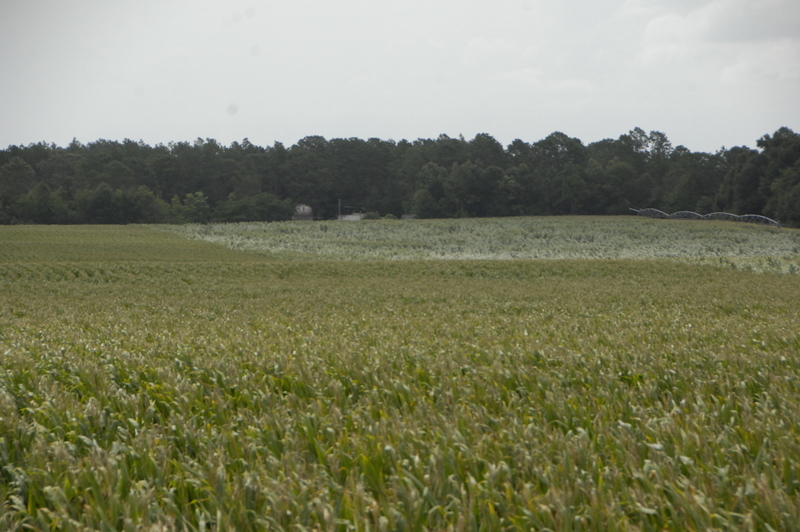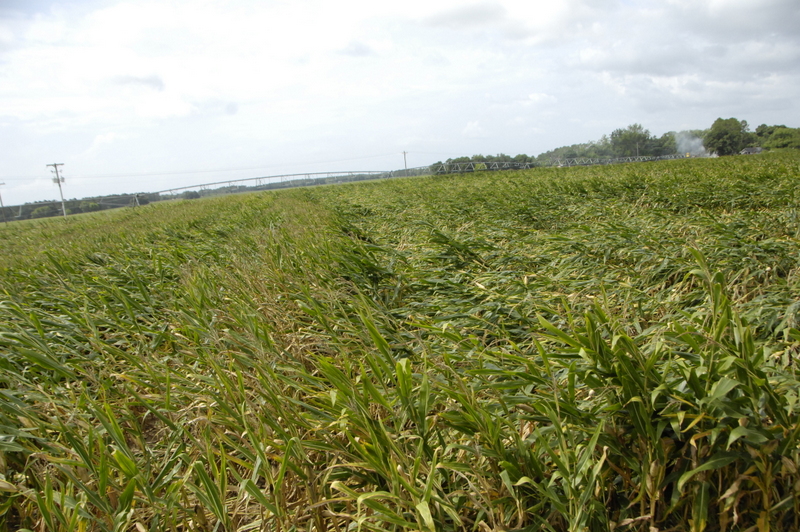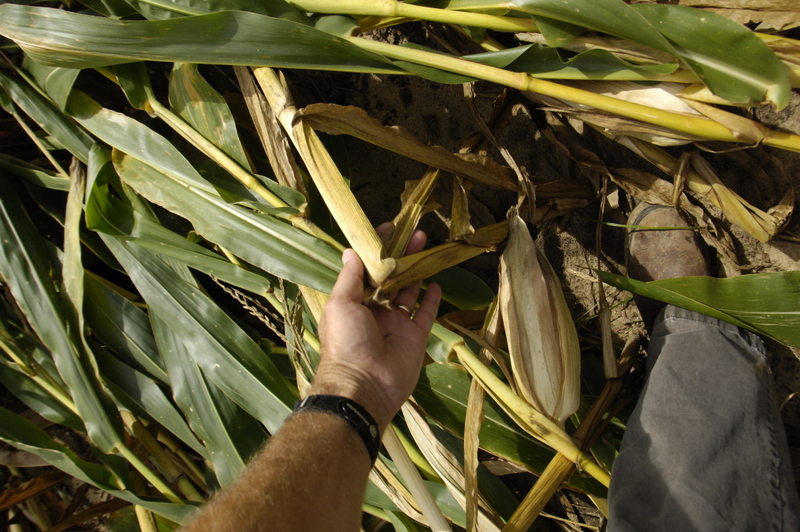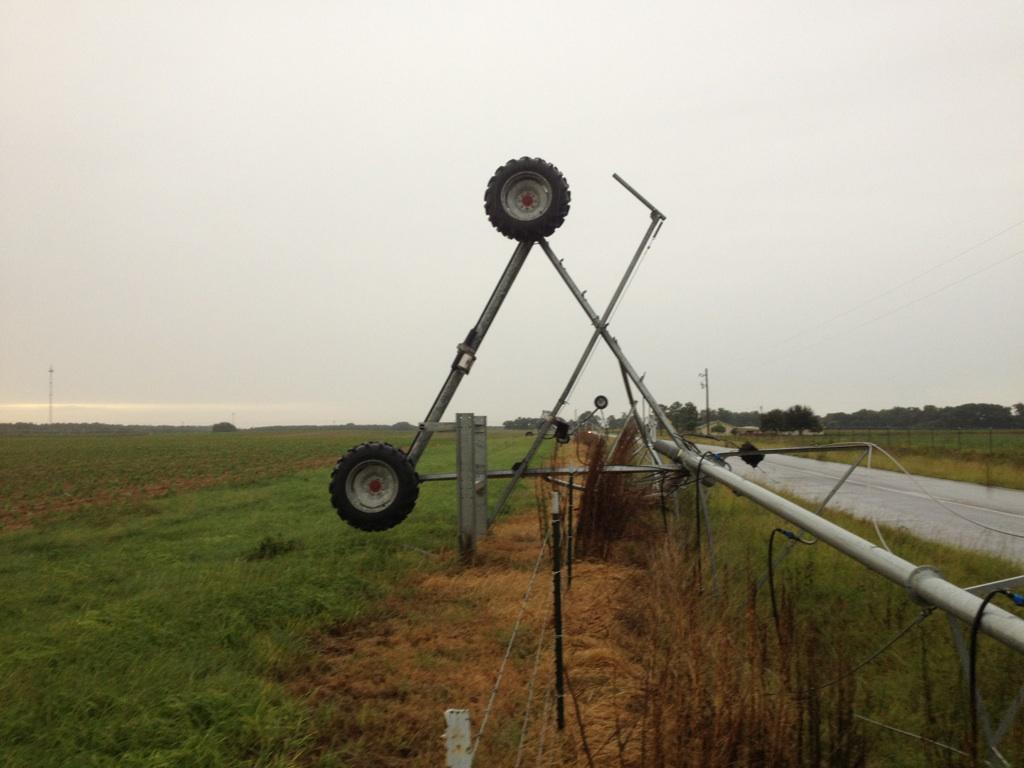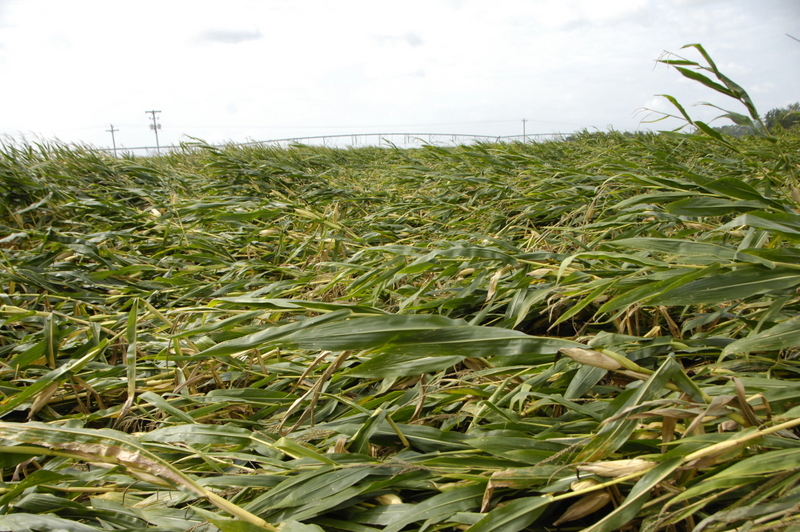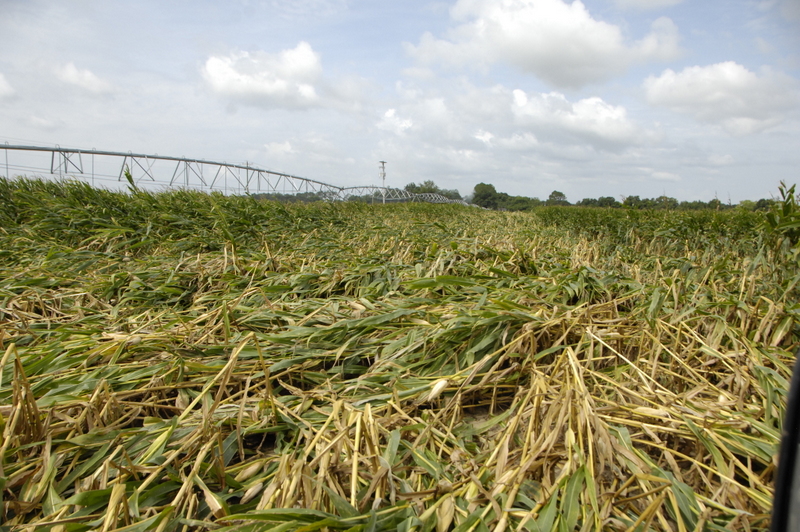Archive for the ‘Corn’ Category
Posted by romeethredge on May 20, 2016
Sunny weather and dry – speeds corn growth and makes peanut thrips bad. Corn Tasseling in several fields now. Very little disease seen. We saw a spot or 2 of NCLB but no Southern rust. We did see some of the common rust but it’s no problem. A few stink bugs seen in some spots but not many anywhere.
Thrips are terrible in peanuts and several fields had to be sprayed, even some that had Thimet under them. The weird thing about thrips damage is when you see the leaf damage….. it’s too late. In other words, unless the plants are carefully scouted for thrips you can’t really tell they are working excessively, but a week later we see the damage. The good thing is peanuts are tough and can stand a lot.
We are seeing a little Aspergillis crown rot in some peanuts. It’s worse when it’s hot and dry. Watering will help this problem. We have seen a few stand problems, too… rotting seed.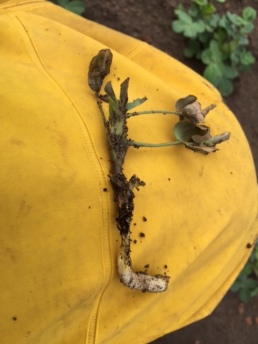
I’d never seen a turtle like this before, he was getting around just fine in the middle of a 100 acre peanut field, why… I don’t know. Did he get Gator bit?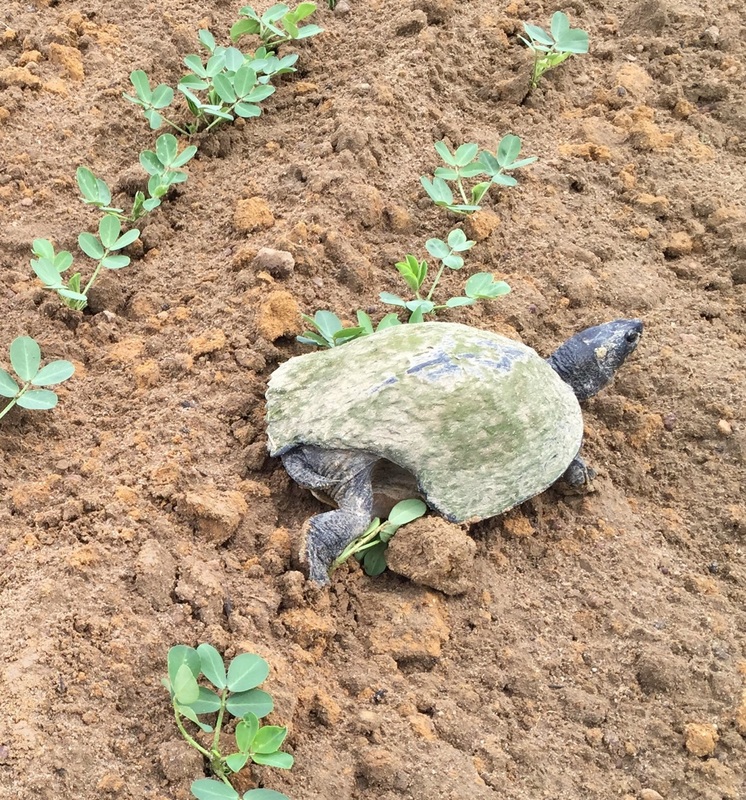
Tassel stage is referred to as VT. And soon after we go to R1, (Reproductive stage 1) when the silks emerge from the little ears and the pollen starts falling from the tassels. The greatest production of pollen from a field will occur over 4 days, with some pollen shedding for a week or more. Over 2 million pollen grains fall from each tassel. Peak pollen shed is mid morning and then towards late afternoon more falls, but if it’s raining or a heavy dew the plant won’t shed pollen until it dries. Also, some research shows that when the temperature goes above 86 degrees there isn’t much shed. If it’s cloudy and slightly cool, pollen may fall most of the day. Extreme heat (100 degrees) can kill some of the pollen.
Corn near Lela this week….
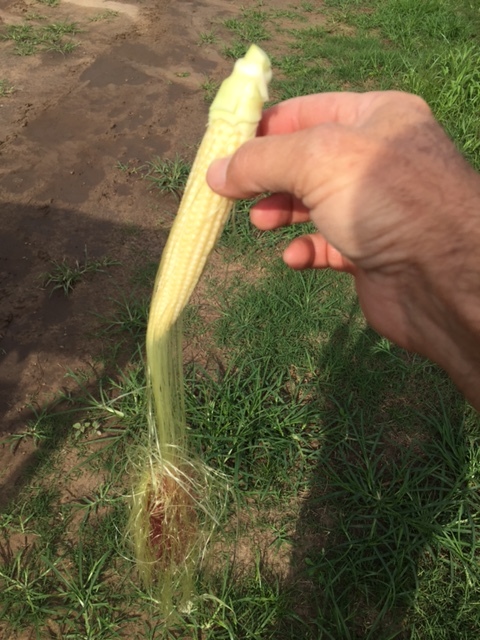
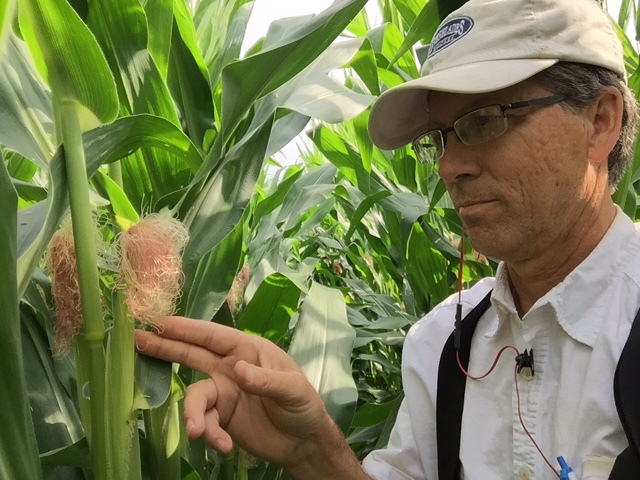
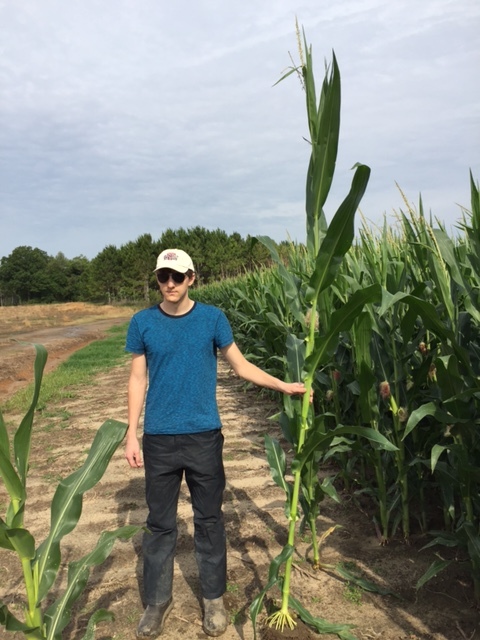
This is a very critical time in corn development and we don’t want any stress on the plants. Stress during silking can reduce the number of kernels per ear, not the number of rows (that was decided a while back), but the number of kernels extending out on the cob. Getting pollen shed and silking synchronized is important for high yields. Plants that came up later likely won’t get pollinated well. Other stresses like nematode spots or leached sandy spots, or overly wet spots that may be slightly behind in silking can have problems, too.
Silks are receptive to pollen for at least 5 days after coming out, they feel a little sticky. It’s amazing to me how each silk gets a pollen grain that travels to each kernel. What a miracle God does every time. The first silks come from the base of the ear. If the silks coming from the top of the ear come out too late they won’t get pollinated. The corn ear has 700 to 1,000 potential kernels and usually only 450 to 550 are expected to make it.
We saw this common rust this week, it’s cousin, Southern Rust is real bad but common isn’t.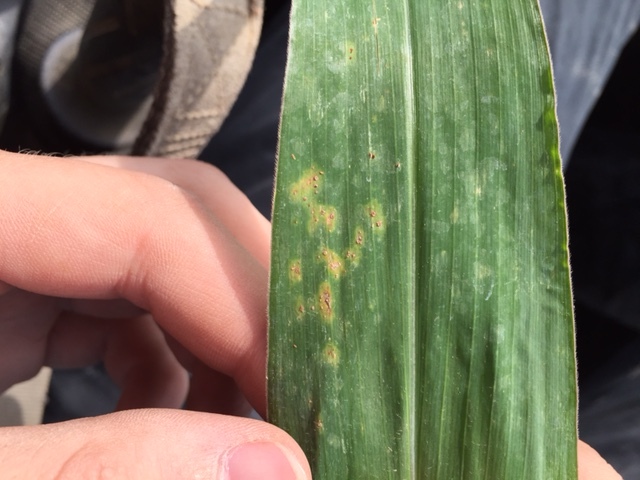
Seen only a spot or 2 of Northern corn leaf blight this year. Good news as we sometimes have to spray corn early if it comes on. My son Jesse, who is helping me found this, this week.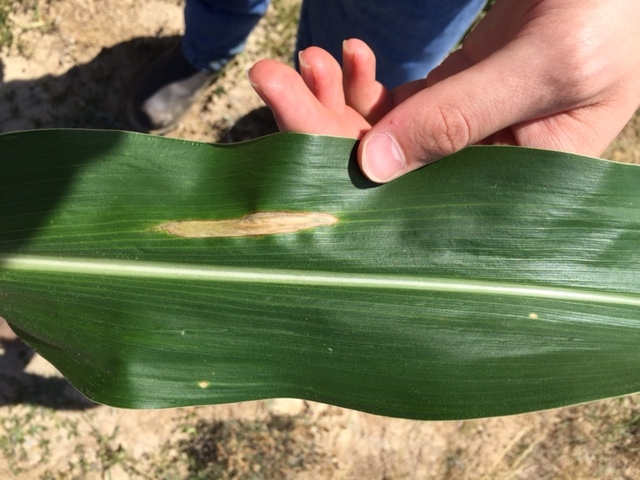
Later,
Rome
Posted in Corn | Leave a Comment »
Posted by romeethredge on March 5, 2016
Corn planted a week ago (Feb. 27th) is doing pretty well. A pretty hard crust developed midweek in some fields and we thought we’d have to water it but the good timely rain came Thursday night. There is still danger of future frosts causing damage to this early planted corn but spreading out risk is usually a very good idea. There was some concern as we had 2 hard frosts last Saturday and Sunday mornings. Soils never did cool that much however, thankfully.


Here’s the average daily soil temperatures at the 2 inch level for this last week at the Donalsonville Weather Station.
Sat Sun M Tues Wed Thurs Fri
57 58 60 62 64 60 59
This next week should be just right for corn planting with less chance of future cold damage on it and warmer soil temperatures for quick emergence. When it dries off enough to plant.
Posted in Corn | Tagged: corn | 1 Comment »
Posted by romeethredge on February 26, 2016
Whether to plant corn now or wait a while is what we are thinking about….
Lots to consider.
In some spots that question is answered due to soils being too wet. We don’t want to make a mess by planting when too wet, for sure.
Often we look at soil temperatures. On corn we look at the 2 inch depth.
As I’m writing this at 8:30 on Friday morning the 2 inch soil temperature at the Donalsonville Airport is 51 degrees. But it should rise during the day. What we really need to look at is the average over the last few days. It’s in pretty good shape. Going back in time from yesterday 58,63,64,63. At soil temps above 60 corn comes up quickly. As long as we have 55 it will still emerge but a little slower.
Tonight will be cool but after that we will be in a warming trend with no heavy rains coming so we should be good to go. I couldn’t argue with getting a field planted before then. We don’t know how cold it will get in the next few weeks, so we may want to space out plantings, but it could get real rainy in a hurry so we need to have some in the ground, too.
Here’s a photo from last year. I like the shirt. We need Doctors, carpenters, plumbers, consultants a lot but we need farmers at least 3 times a day!! I kinda like to eat that often and I like my cotton shirts, too.
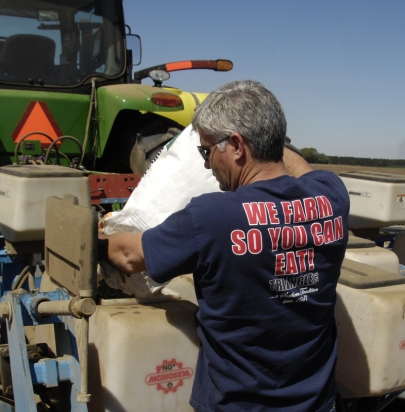
Posted in Corn | Tagged: corn | 2 Comments »
Posted by romeethredge on November 23, 2015
We will be having our Field Corn production meeting early this year. We will have it on Wednesday, Dec 2 at Noon at the Lions Hall in Donalsonville. Dr. Dewey Lee and Dr. Eric Prostko, UGA Extension Scientists, will be here to talk about Corn production and weed management. We look forward to seeing you there.
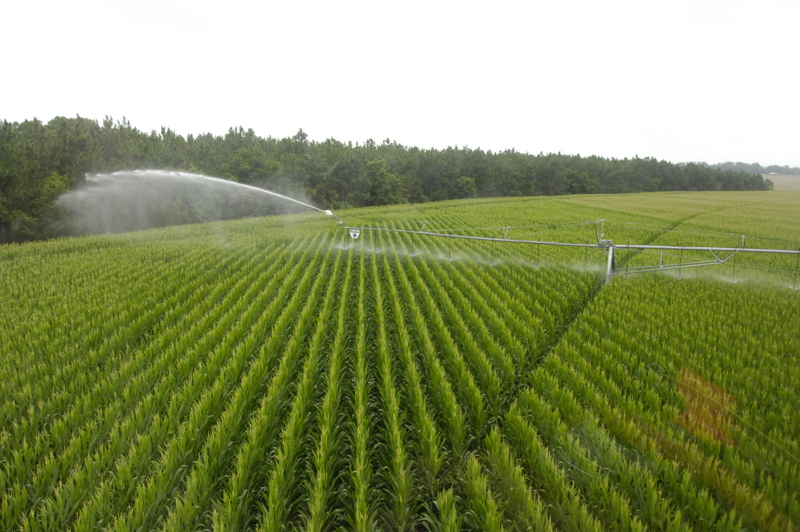
Corn production in Georgia has remained relatively steady in the past decade due to limited opportunities for profit and increased risks from higher production costs. Corn acreage in the 1970s averaged 1.64 million acres in Georgia, however, it declined almost 50 per cent in the 1980s to 0.86 million acres due to poor prices and extended periods of drought and further still during the 1990’s. Since then, acreage has stabilized averaging 380,000 acres in recent years. It is predicted that acreage will drop slightly in 2015 from 2014 due to lower corn prices and increasing cost of inputs.
Plant corn as soon as temperature and moisture become favorable for seed germination and seedling growth. Soil temperature in the seed zone should be 55 F or greater before planting. Corn seed will sprout slowly at 55 F while germination is prompt at 60 F. Delay planting if cold weather drops soil temperatures below 55 F at the two-inch level. However, if soil temperatures are 55 F and higher, and projections are for a warming trend, corn planting should proceed.
Extremely early planting introduces a risk to frost or freeze damage and subsequent loss of stands, however, producers yields are greatest with early planting. Usually, as long as the growing point is below ground level, corn can withstand a severe frost or freezing damage without yield reduction. It is best therefore to monitor soil conditions and weather if your desire is to plant as early as possible.
Generally it takes corn seed 7 to 12 days to emerge when planted in soils there are 55 F. Early planted corn out-yields late planted corn. Depending on your location, planting dates may range from early March in south Georgia to mid-May in north Georgia. Early planting helps avoid periods of low rainfall and excessive heat during pollination, both of which lead to internal water stress during critical periods of corn development. Early planting is essential when double cropping soybeans, grain sorghum, millet or vegetables following irrigated corn. As planting is delayed into the summer, corn yields decline. In general, yields decline at ¾ a bushel per day rising to about 2.5 bushels per day.
Posted in Agriculture, Corn | Tagged: corn | Leave a Comment »
Posted by romeethredge on July 15, 2015
Posted in Corn | Tagged: corn | Leave a Comment »
Posted by romeethredge on July 10, 2015
It’s a happy day when your corn black layers and you can cut the irrigation off. Many of our oldest corn fields have matured and the black layer has formed at the base of the kernels so they have cut themselves off from receiving any more photosynthate from the plant so it’s made.
Folks are cleaning up the combines and cleaning out the grain bins and getting grain dryers ready. Several folks are talking about starting combining corn early next week.
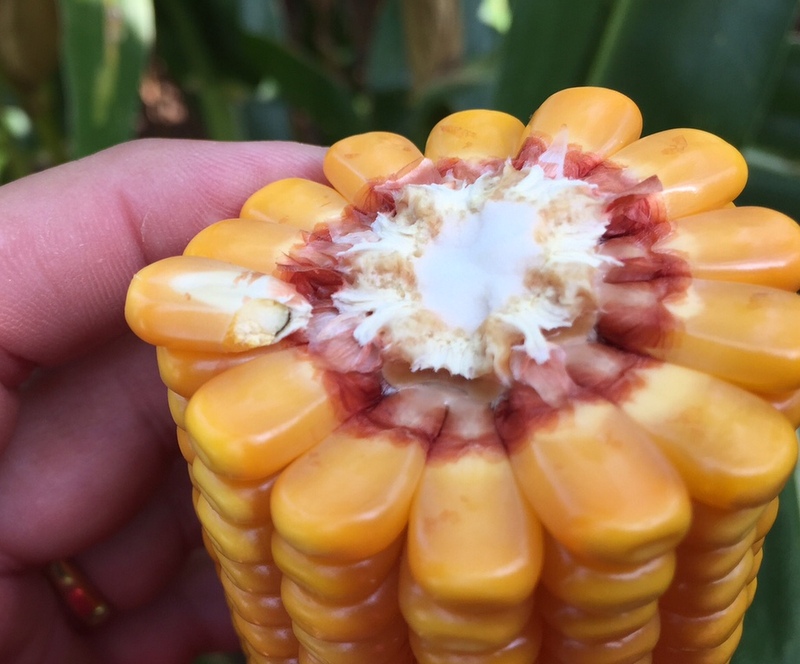
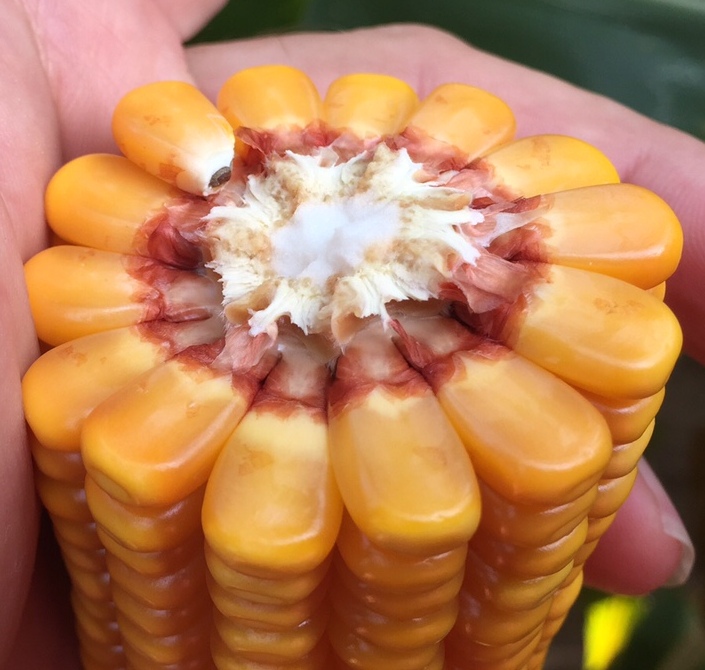
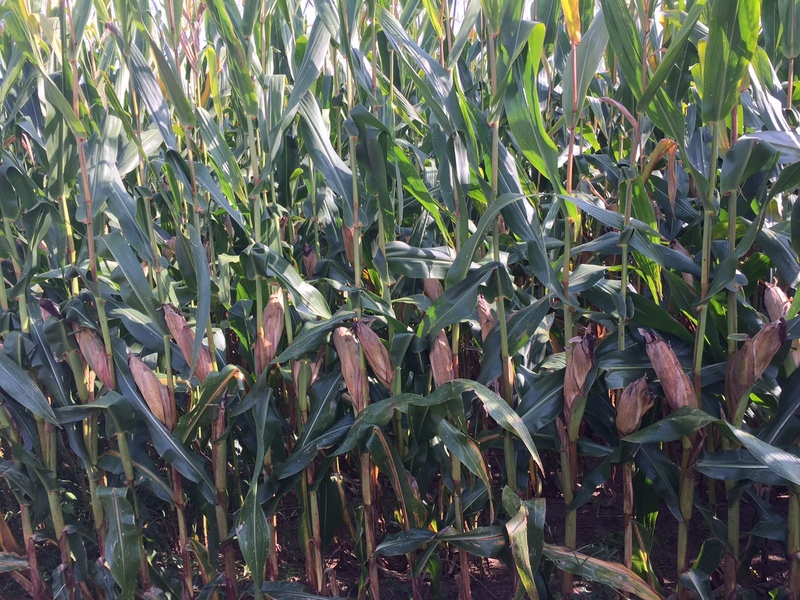
Posted in Corn | Tagged: corn | Leave a Comment »
Posted by romeethredge on July 2, 2015
Posted in Corn | Leave a Comment »
Posted by romeethredge on July 2, 2015
Here is some Southern Corn Rust I saw this week here in Seminole County. I have been pleasantly surprised at how slowly southern rust has spread. In other words, it has not exploded this year as it has in some years. Even in this field it was spotty around, not a lot anywhere. Part of the reason may be that most everyone protected their crop from the disease pretty well.
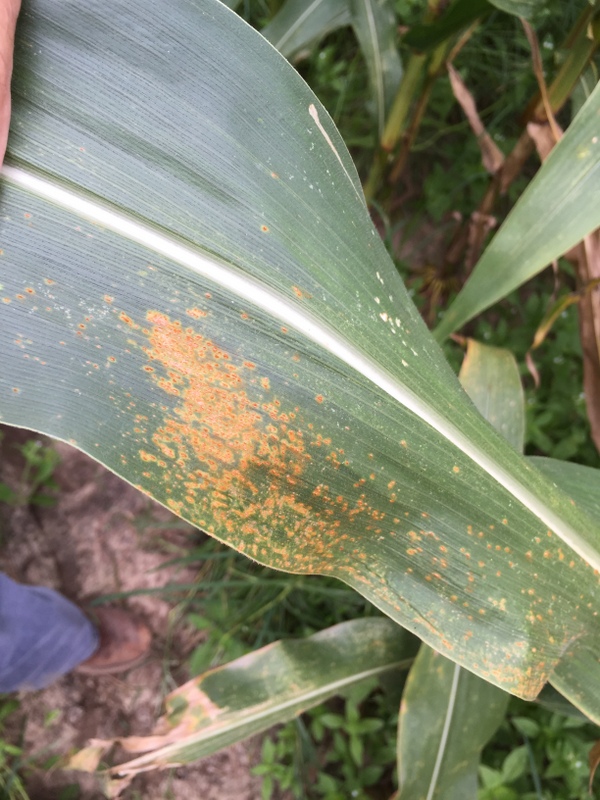
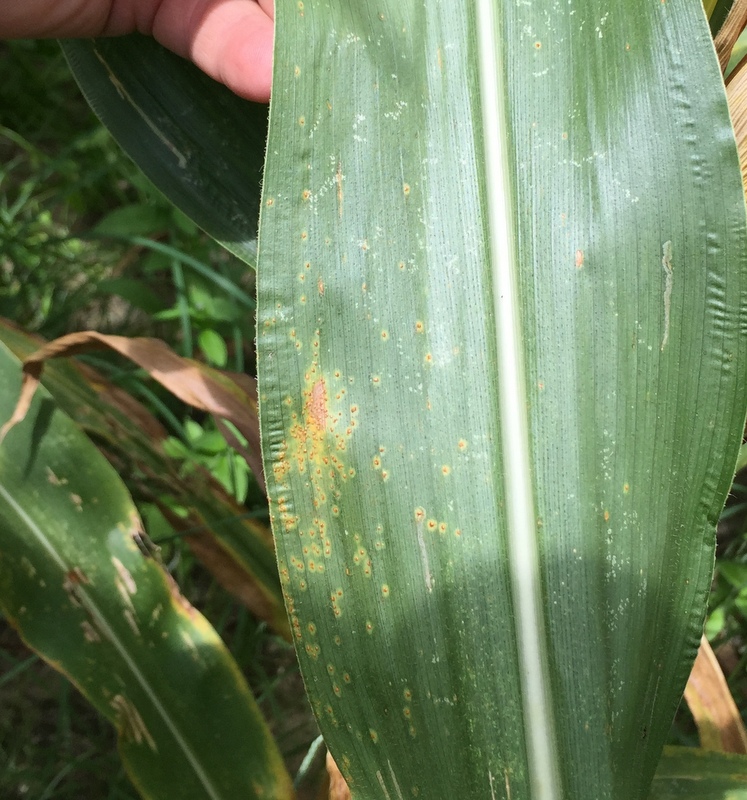
Posted in Corn, Plant Pathology | Tagged: corn, Plant pathology | Leave a Comment »
Posted by romeethredge on July 2, 2015
Here’s a list of the 2015 DuPont Pioneer field days. These events will be fast-paced and informative. They will discuss new, hybrids, as well as the latest seed technologies for grain and silage production. Please choose a field day near you. A meal will be provided at each location.
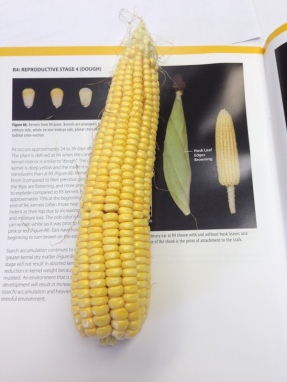
Tuesday, July 7 at 5:30 p.m. – Glenn Heard Farms – Brinson, GA
Meet at Fellowship Baptist Church at 2861 Spring Creek Rd.
Thursday, July 9 at 5:30 p.m. – Hayley Byne Farms – Leesburg, GA
Meet at Farm Shop at 121 Oakland Road
Tuesday, July 14 at 5:30 p.m. – Al Sudderth Farms – Lizard Lope Lodge
Meet at Lizard Lope Lodge on Hwy 45 at Calhoun and Terrell County Line
Friday, July 17 at 10 a.m. – Pioneer Research Station
Head South of Camilla on 112 toward Cairo. Turn East on Wilder Road,
then follow the field day signs
Posted in Corn | Tagged: corn | Leave a Comment »
Posted by romeethredge on June 19, 2015
We are getting fairly close to the end of the watering of our oldest corn, it has begun denting, but the water use is still pretty high. With the heat and winds, the water use is especially high.
In looking at some soil moisture graphs we can see that the corn is still pulling moisture from the field. A good thing about soil moisture monitoring is that you can see the soil moisture increase as the crop slows down on its water use. I looked at a couple of graphs this week and they show continued use by the crop. You can see soil water replenish with irrigation or rainfall and see how it goes down quickly. In some cases it’s hard to keep up. Sometimes it’s deeper that you see the moisture leaving, in other words the surface may seem wet. It’s good to get a shovel to check moisture deeper as well.
Here they are below. They are from client graphs of Certified Ag Resources and Holder Ag Consulting.
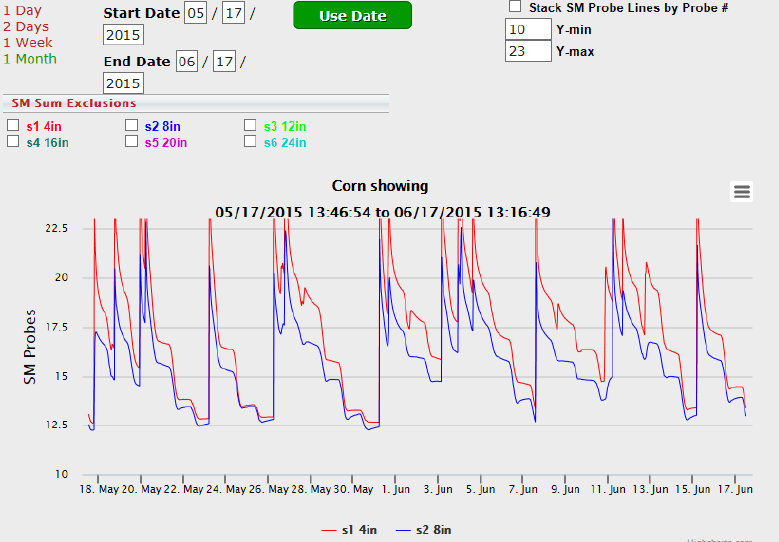
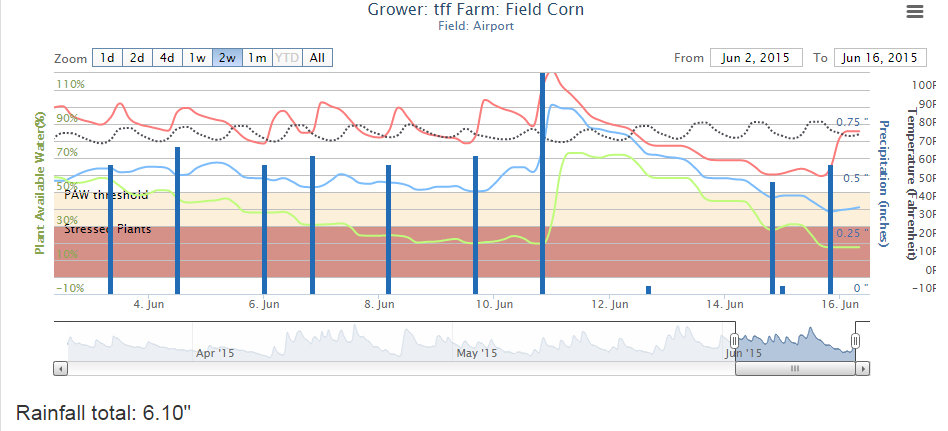
Posted in Corn, irrigation, Water | Tagged: corn, irigation | 1 Comment »











